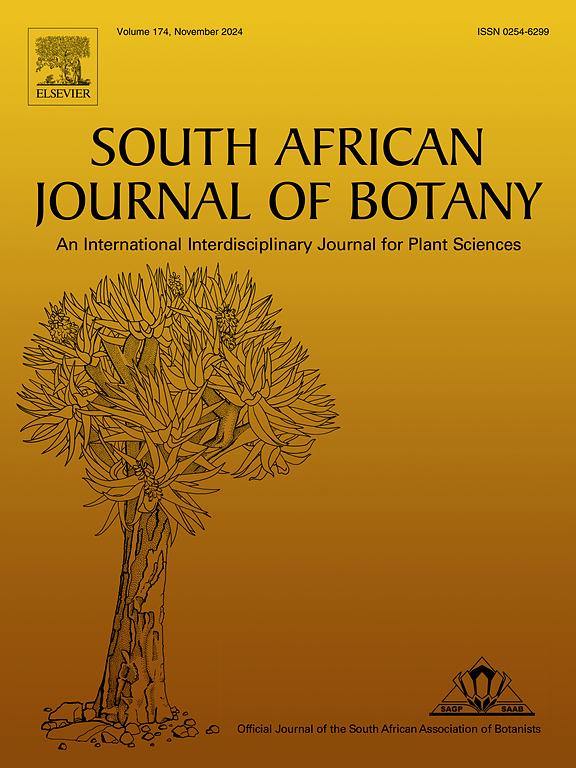Subinhibitory concentrations of Rhubarb Palmatum and its main monomers causing inhibition of alpha-hemolysin virulence in Staphylococcus aureus USA300
IF 2.7
3区 生物学
Q2 PLANT SCIENCES
引用次数: 0
Abstract
The virulence of Staphylococcus aureus (S. aureus) is closely related to the production of virulence factors; thus, the treatment of S. aureus infection has become a challenging problem. Rhubarb has the characteristics of broad-spectrum antibacterial activity and drug resistance. However, the antimicrobial effects of Rhubarb and its major monomers remain unknown. In this study, the effect of Rhubarb at 1/32 and 1/64 MIC on the expression of USA300 virulence factor of Staphylococcus aureus was analyzed through transcriptome analysis. The results showed that the aqueous extract of Rhubarb significantly down-regulated the expression of USA300 virulence factors Spa, LukD, LukE, LukG, LukH and Hla at 1/32 and 1/64 MIC. The inhibitory effect of Hla was found to be the most obvious. RT-qPCR, hemolysis test, Western blot, and enzyme-linked immunosorbent assay were used to further verify the inhibitory effect of major monomers of rhubarb emodin, aloe emodin, rhein, and emodin 8–0-β-d-glucopyranoside on USA300 virulence factor α-hemolysin at sub-inhibitory concentrations. Finally, the damage degree of rhubarb monomer emodin and aloe-emodin against USA300 was confirmed in human lung epithelial cell A549, suggesting for the first time that rhubarb and its active components could inhibit the toxicity of α-hemolysin of Staphylococcus aureus, and that its anti-virulence effect may be the key to resist bacterial infection. This study provides a theoretical basis and a new strategy for the use of rhubarb in the clinical treatment of Staphylococcus aureus infection.
求助全文
约1分钟内获得全文
求助全文
来源期刊

South African Journal of Botany
生物-植物科学
CiteScore
5.20
自引率
9.70%
发文量
709
审稿时长
61 days
期刊介绍:
The South African Journal of Botany publishes original papers that deal with the classification, biodiversity, morphology, physiology, molecular biology, ecology, biotechnology, ethnobotany and other botanically related aspects of species that are of importance to southern Africa. Manuscripts dealing with significant new findings on other species of the world and general botanical principles will also be considered and are encouraged.
 求助内容:
求助内容: 应助结果提醒方式:
应助结果提醒方式:


